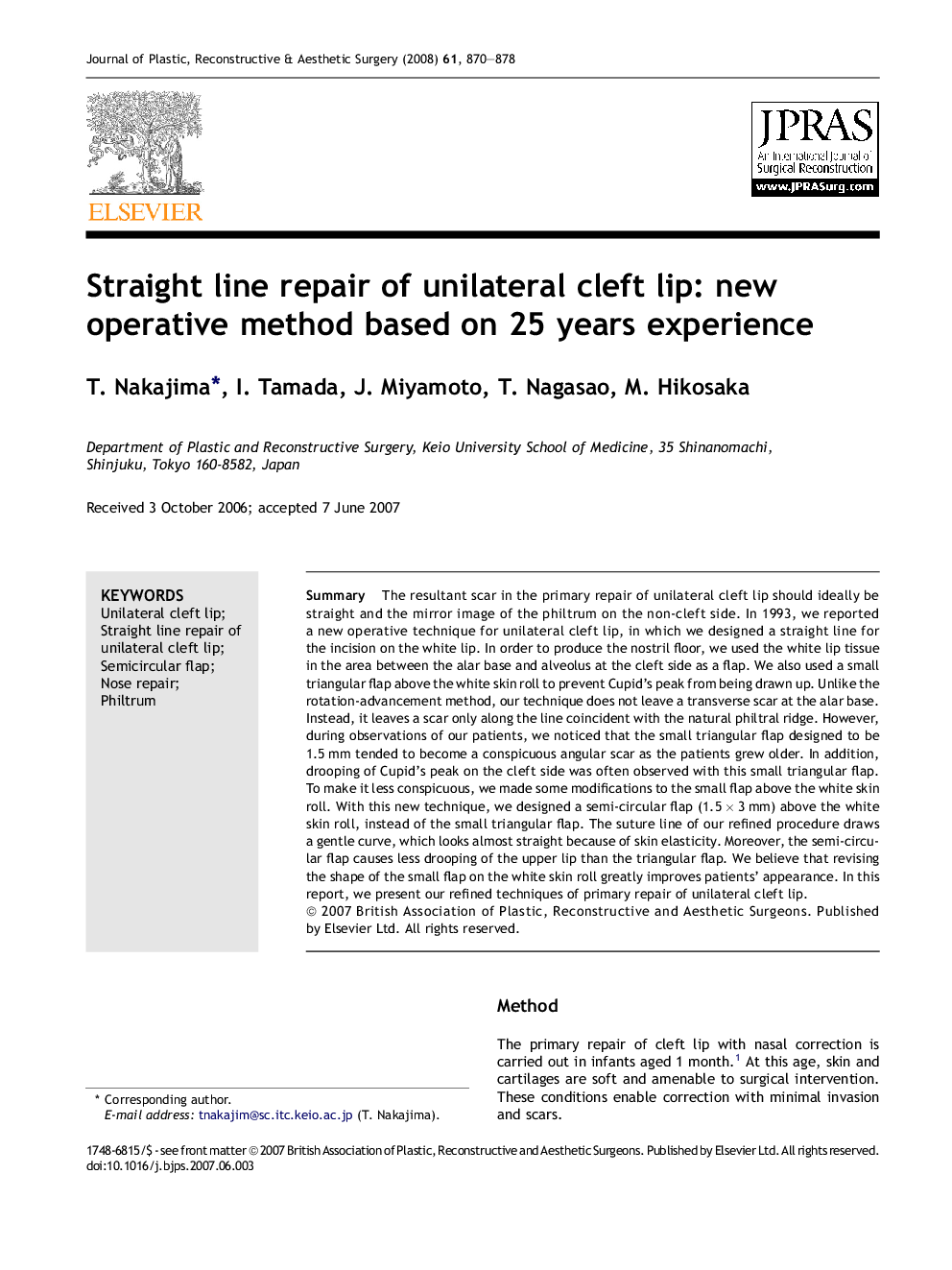| Article ID | Journal | Published Year | Pages | File Type |
|---|---|---|---|---|
| 4120921 | Journal of Plastic, Reconstructive & Aesthetic Surgery | 2008 | 9 Pages |
SummaryThe resultant scar in the primary repair of unilateral cleft lip should ideally be straight and the mirror image of the philtrum on the non-cleft side. In 1993, we reported a new operative technique for unilateral cleft lip, in which we designed a straight line for the incision on the white lip. In order to produce the nostril floor, we used the white lip tissue in the area between the alar base and alveolus at the cleft side as a flap. We also used a small triangular flap above the white skin roll to prevent Cupid's peak from being drawn up. Unlike the rotation-advancement method, our technique does not leave a transverse scar at the alar base. Instead, it leaves a scar only along the line coincident with the natural philtral ridge. However, during observations of our patients, we noticed that the small triangular flap designed to be 1.5 mm tended to become a conspicuous angular scar as the patients grew older. In addition, drooping of Cupid's peak on the cleft side was often observed with this small triangular flap. To make it less conspicuous, we made some modifications to the small flap above the white skin roll. With this new technique, we designed a semi-circular flap (1.5 × 3 mm) above the white skin roll, instead of the small triangular flap. The suture line of our refined procedure draws a gentle curve, which looks almost straight because of skin elasticity. Moreover, the semi-circular flap causes less drooping of the upper lip than the triangular flap. We believe that revising the shape of the small flap on the white skin roll greatly improves patients' appearance. In this report, we present our refined techniques of primary repair of unilateral cleft lip.
